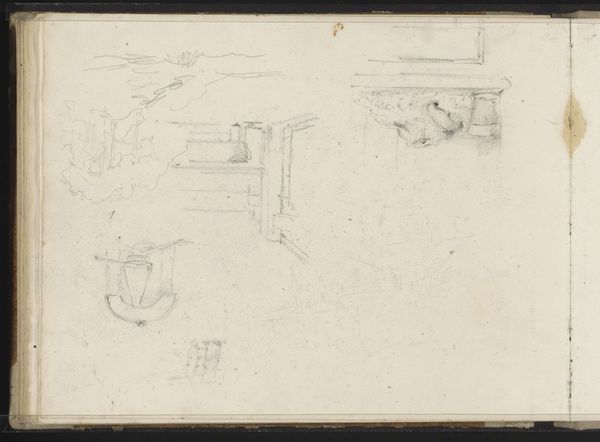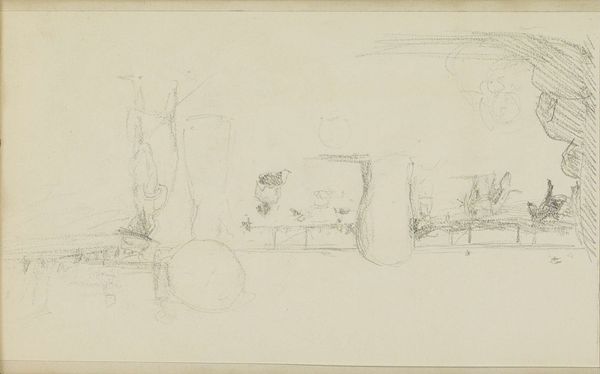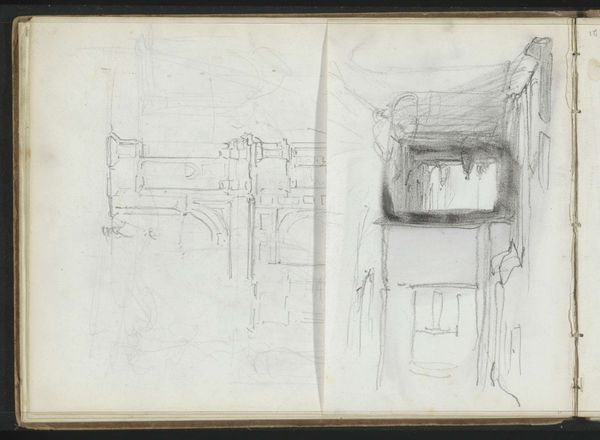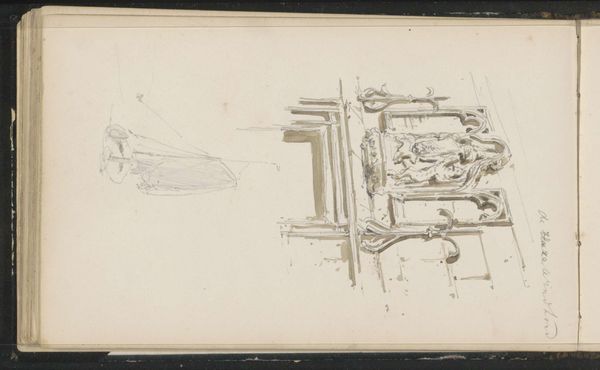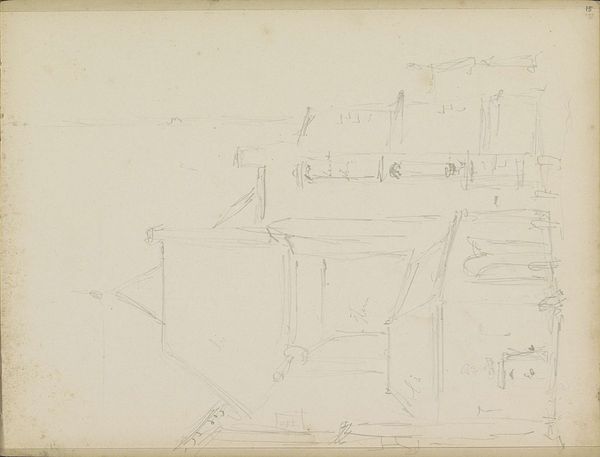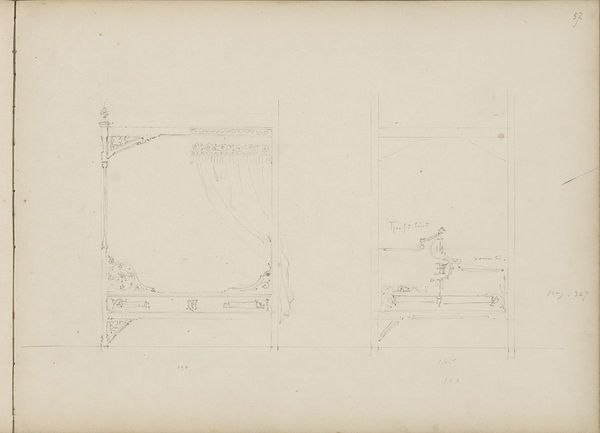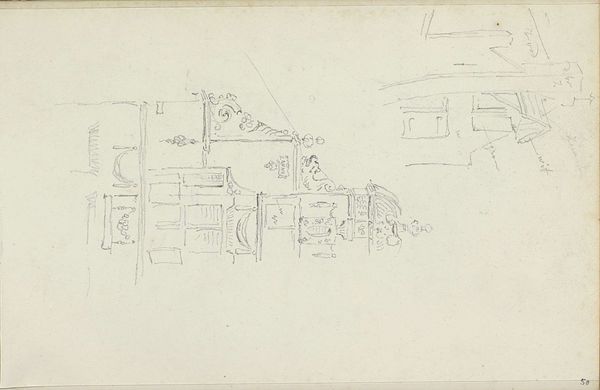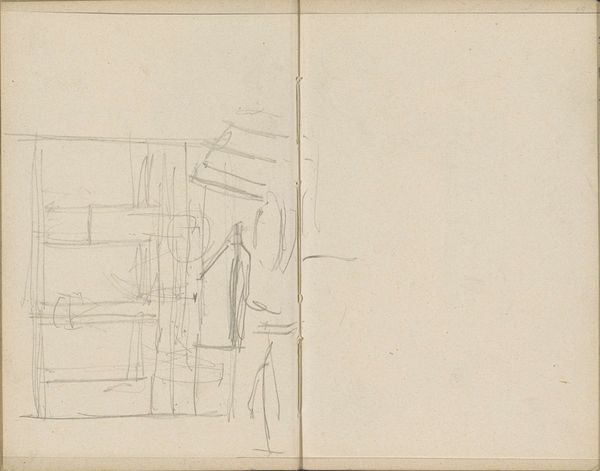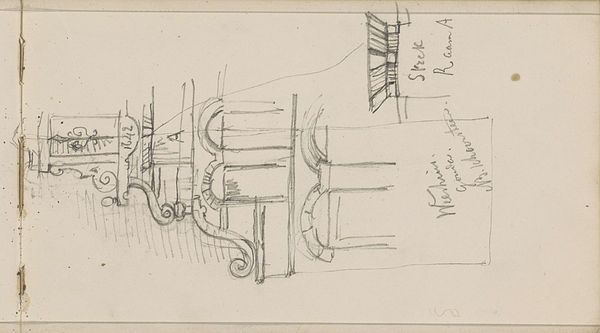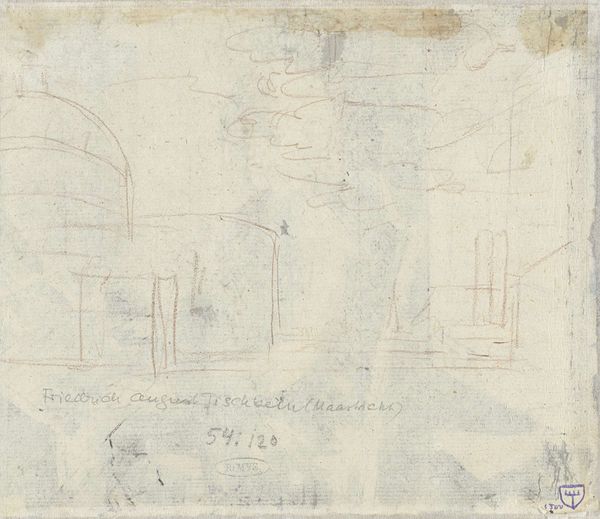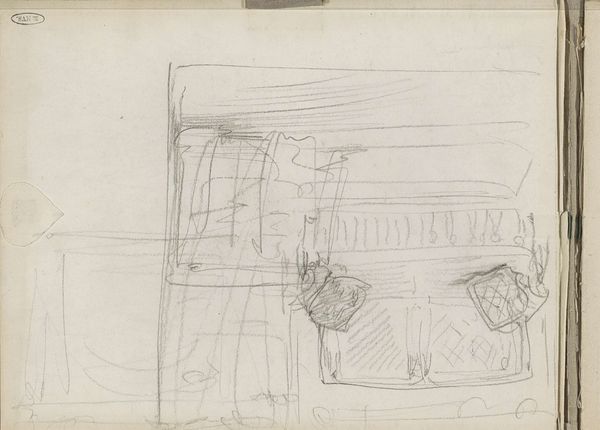
drawing, paper, pencil
#
drawing
#
amateur sketch
#
table
#
aged paper
#
toned paper
#
light pencil work
#
pencil sketch
#
sketch book
#
incomplete sketchy
#
paper
#
form
#
personal sketchbook
#
pencil
#
sketchbook drawing
#
sketchbook art
Copyright: Rijks Museum: Open Domain
Curator: The Monogrammist DS, active sometime between 1850 and 1950, created this unassuming drawing, rendered simply in pencil on paper, titled "Interieur met twee stoelen." Editor: It looks like a forgotten corner, a fleeting idea sketched in a personal notebook. The thin pencil lines are so light, the scene almost disappears into the aged paper. There's a loneliness about it. Curator: Perhaps not loneliness, but a certain introspection. These sparse sketches of domestic interiors became increasingly popular during a period of industrial change and burgeoning capitalist expression that began mid-19th century. How does this domestic corner act as resistance to the cultural narratives being presented? Editor: You read resistance, I see vulnerability. This incomplete, sketchy style contrasts with the more rigid academic styles prevalent at the time, maybe it suggests a space where personal expression and subjective experience triumph. What do you mean, how does this reflect in terms of resistance and revolution? Curator: This image stands out not for what it presents in fine detail but for its suggestion of quiet non-conformity. We can't underestimate the act of choosing everyday subjects, specifically in their reduced forms, to offer critique for an increasing population invested in outward progress. Consider also how the absence of figures draws our attention to absence itself: from who are these spaces created? Editor: That's fascinating. The emptiness takes on new meaning. And thinking about "form" as the sole subject allows the artist freedom to use line and composition without social implications. It allows them, maybe even us, a visual silence...a freedom. Curator: I agree. The seeming inconsequential nature of the image becomes powerful. It compels us to question the forces that shape both artistic and social narratives, and recognize spaces of quiet refusal. Editor: Looking at this piece, it highlights how something that seems simple, a mere sketch, can contain a surprising amount of critical and personal thought. Curator: Absolutely. This work prompts one to look deeper at not just this period, but today's artistic practices and what voices become amplified during such intense periods of socio-cultural upheaval.
Comments
No comments
Be the first to comment and join the conversation on the ultimate creative platform.

